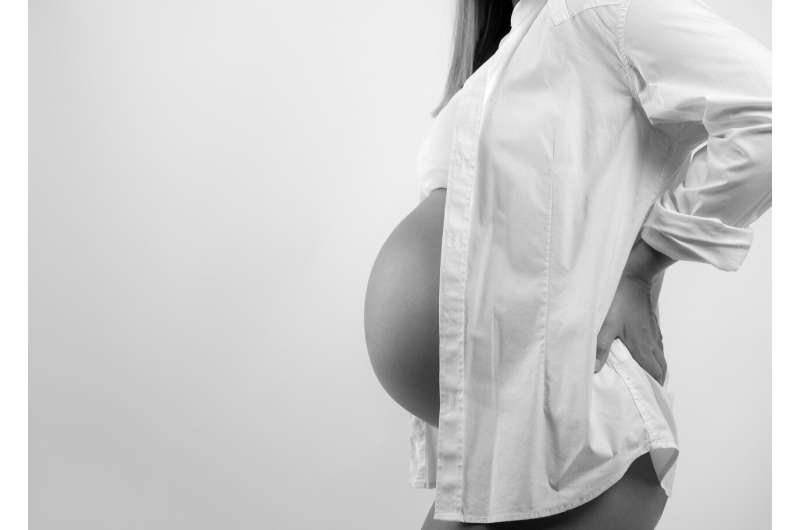
Despite substantial declines in deaths related to pregnancy and childbirth in high income countries in recent years, mothers in Slovakia and the UK are up to four times more likely to die during pregnancy or soon after than mothers in Norway and Denmark, finds an in-depth analysis of data from eight European countries, published by The BMJ today.
Overall, the findings show that the youngest and oldest mothers are at particular risk, along with those born abroad or from minority ethnic backgrounds.
As such, the researchers say enhanced methods to identify, document, and review maternal deaths are needed to provide reliable maternal mortality data in high income countries.
Today’s findings follow a report published last week showing that the number of women dying during pregnancy or shortly after has risen sharply in the UK and Ireland (from 8.79 women per 100,000 giving birth in 2017-19 to 10.9 per 100,000 in 2018-2020), with increases steepest in the most deprived areas.
Although maternal mortality is at historic lows in high income countries, it remains an important indicator of quality of care, health system performance, and, more specifically, maternal care.
However, previous studies comparing countries’ maternal mortality rates have been based on government death certificate data (vital statistics), which tend to underestimate maternal deaths, and give inaccurate information about cause of death, preventing meaningful international comparisons.
In response, several countries have set up enhanced maternal mortality surveillance systems to minimize differences in how information on maternal deaths is collected, providing more reliable and comparable data between countries.
In a bid to better understand maternal mortality patterns across countries, a team of researchers compared data from eight high income countries with enhanced surveillance systems: Denmark, Finland, France, Italy, the Netherlands, Norway, Slovakia, and the UK.
The data were taken from the International Network of Obstetric Survey Systems (INOSS), an international collaboration aiming to gather data on serious illnesses in pregnancy and childbirth.
Data from 2013 and after were collected for a three-year period for France, Italy and the UK, and a five-year period for Denmark, Finland, the Netherlands, Norway, and Slovakia, to account for the varying number of births in each country. Data from Finland were collected from 2008 to 2012.
Deaths at any time during pregnancy and up to one year after the end of pregnancy were included in the analysis.
A maternal mortality ratio (MMR) was calculated as the number of maternal deaths per 100,000 live births up to 42 days after the end of pregnancy, while deaths occurring between 43 days and one year after the end of pregnancy were defined as late deaths.
The data analysis found a fourfold difference in MMR between countries with the highest (Slovakia, 10.9) and lowest (Norway, 2.7) rates. And of the eight countries included in the study, the UK had the second highest MMR after Slovakia, with 9.6 deaths per 100,000.
The study also shows that vital statistics underestimate true rates of maternal mortality by at least a third in all countries bar Denmark, suggesting that they are not a valid source for surveillance of maternal mortality in high income countries.
What’s more, the researchers found that in France and the UK, the two countries where late maternal deaths were recorded, there were 10.8 and 19.1 late deaths per 100,000 live births, respectively. These late death figures account for 25% of total maternal mortality in France, and 50% in the UK.
The results also showed that in all countries but Norway, the maternal mortality rate was at least 50% higher for women born abroad or with a minority ethnic background.
A pooled analysis of the data by age revealed that maternal death rates were highest for both the youngest and the oldest mothers in all countries except the Netherlands. For example, women under 20 were at twice the risk of death compared with women aged 20-29, and those aged 40 years or over were at almost four times the risk of death.
And cardiovascular diseases and suicide were found to be the leading causes of maternal deaths in most countries. This, say the researchers, “underlines the importance of women’s mental and cardiovascular health and the need to develop strategies before, during, and after pregnancy to prevent the morbidity and mortality these problems can cause.”
This is an observational study, so no firm conclusions can be drawn about cause and effect, and the researchers acknowledge some limitations that may have influenced their results, including differences in baseline characteristics of pregnant women and classification of maternal deaths, particularly late deaths.
The researchers also acknowledge that some of the discrepancies between countries may stem from national privacy laws, for example, in the Netherlands, where deaths and birth certificates are not linked. However, they are confident in the data, saying differences in maternal mortality profiles between countries “are not at all or very little related to measurement variations.”
“Variations in maternal mortality ratios exist between high income European countries with enhanced surveillance systems,” they write. To further reduce maternal mortality by learning from best practices and each other, the researchers suggest that “in-depth analyses of differences in quality of care and health system performance at national levels are needed.” And they stress that “cardiovascular diseases and mental health in women during and after pregnancy need to be prioritized in all countries.”
In a linked editorial, Professor Andrew Shennan and colleagues argue that variations in maternal mortality “remain one of the starkest health injustices in the world” and say accurate surveillance of maternal deaths is an international priority. They stress that “the relatively low maternal mortality ratios identified in this study are striking compared with those recorded globally, with many countries still reporting more than 500 per 100 000 live births despite focused efforts.”
“Ultimately, all countries should have dedicated surveillance systems; meaningful comparisons in absolute numbers of deaths by specific causes will allow strategies and policy makers to direct efforts appropriately. This latest comparison is a valuable start and could lead the way in efforts to align methods of data collection internationally,” they add.
More information:
Maternal mortality in eight European countries with enhanced surveillance systems: descriptive population based study, The BMJ (2022). DOI: 10.1136/bmj-2022-070621
Journal information:
British Medical Journal (BMJ)
Source: Read Full Article
